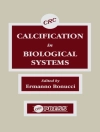Tremor is intimately linked to the numerous interactions of the central and peripheral nervous system components tuning motor control, from the cerebral cortex to the peripheral effectors. Activities of central generators, reflex loop delays, inertia, stiffness, and damping are all factors that influence the features of tremor. This completely updated new edition discusses the pathophysiology of tremor, including membrane mechanisms and rodent models, the advances in genetics, and the musculoskeletal models pertinent to body oscillations. The main forms of tremor encountered during clinical practice are considered, taking into account neuroimaging aspects. The book covers recent advances in methodologies and techniques of assessment and provides practical information for daily management. This new edition is informed by the guidelines of the Tremor Task Force of the International Parkinson and Movement Disorders Society. New chapters include Classification of Tremors, Medically Induced Tremors, Resting State f MRI, and Gabaergic Pathways. In addition to pharmacological treatments, neurosurgical approaches such as deep brain stimulation (DBS) and thalamotomy are discussed. Emerging techniques under development are also introduced.
Table of Content
PART I: Fundamental Aspects.- Chapter 1. Definition of Tremor.- Chapter 2. Membrane Mechanisms of Tremor.- Chapter 3 Advances in the Genetics of Human Tremor.- Chapter 4. Two origins of tremors related to the Guillain-Mollaret triangle: the forward model-related tremor and the inferior olive oscillation-related tremor.- PART II:Tremor in Clinical Practice.- Chapter 5. Physiologic Tremor.- Chapter 6. Rest Tremor.- Chapter 7. Postural Tremors.- Chapter 8. Isometric Tremor.- Chapter 9. Essential Tremor and Other Forms of Kinetic Tremor.- Chapter 10. Cerebellar lesions and tremor.- Chapter 11. Orthostatic Tremor.- Chapter 12. Posttraumatic Tremor and Other Posttraumatic Movement Disorders.- Chapter 13 Tremor in Childhood.- Chapter 14. Metabolic Causes of Tremor.- Chapter 15. Drug-Induced Tremor.- Chapter 16. Tremor: The Clinical Approach to Reach the Diagnosis.- PART III: Assessment of tremor.- Chapter 17. Signal Processing.- Chapter 18. Diffusion imaging in Tremor.- Chapter 19. The role of the noradrenergic system in tremor pathogenesis.- Chapter 20. Metabolic Networks in Parkinson’s Disease.- PART IV: Therapies.- Chapter 21. Deep brain stimulation for tremor.- Chapter 22 Mechatronic Devices for Upper Limb Tremor.
About the author
Giuliana Grimaldi, MD, Ph D, is a neurologist. She is affiliated with Unità Spinale, ASP Palermo, Italy. She is a member of the Society for Cerebellar Research (SRC).
Mario Manto, MD, Ph D is a neurologist. He is researcher at the FNRS-Belgium, Head of the Department of Neurology, CHU-Charleroi, and Professor of Neuroanatomy at U Mons. He is the founding and current editor of the international journal The Cerebellum (Springer). He is the President of the Medical Board of Euro-Ataxia. He has founded the Society for Research on the Cerebellum. He is editor of the Contemporary Clinical Neuroscience series (Springer).












